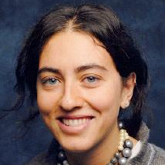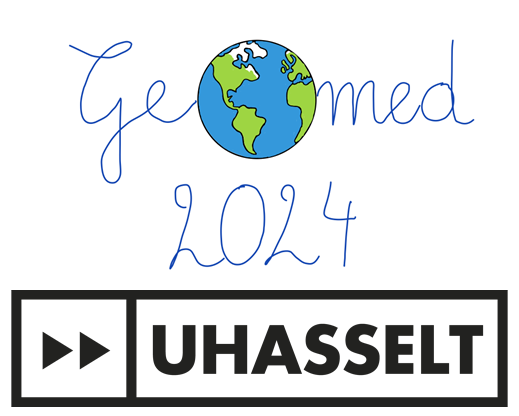Program
The preliminary program will be made available at a later date.


View the content of this page
Program

Keynote speakers

Marta Blangiardo
Imperial College London
UK
m.blangiardo@imperial.ac.uk
A Bayesian hierarchical framework to evaluate policy effects through quasi-experimental designs in a longitudinal setting
The use of quasi-experimental designs has proven popular to establish causal links in observational studies, where randomised clinical trials are not feasible. In the context of longitudinal data, Interrupted Time Series (ITS) can be used to evaluate the effects of interventions. In an ITS study, a time series of a particular outcome of interest is “interrupted” by an intervention at a known point in time (e.g. smoking bans, changes in alcohol trading laws, etc.). Such methods have been extensively used in several research areas, most notably econometrics and more recently in epidemiology and in public health, where they are often (heavily) modified to accommodate specific data requirements (for instance the presence of non-linear time trends or the need to adjust for controls).
In this talk I will present some recent work on the extension of the ITS design to a Bayesian hierarchical framework, aiming to build a flexible, comprehensible, and generalisable statistical modelling framework to evaluate the individual and cumulative impact of “shocks” (e.g. government policies or unpredictable events) on health outcomes over time and specifically when there is some dependency in space. To highlight this, I will show two applications of this approach (i) to evaluate the effect of municipal waste incinerator openings on adverse birth outcomes in England and (ii) to evaluate the impact of two governmental policies on mental-ill health on the whole population and specifically on minoritised ethnic groups in England.

Rob Deardon
University of Calgary
Canada
rob.deardon@ucalgary.ca
A Journey Through Spatial Epidemic Modelling
In recent years, there has been an understandable increase in the interest in the mathematical and statistical modelling of infectious disease epidemics. In this talk, we will journey through the landscape of epidemic models that allow for spatial heterogeneity in the underlying population. Along this journey, we will explore simple meta-population models through to individual-level models, and spend some time discussing recent developments such as models which allow for change in population behavior to be accounted for.
Typically, statistical inference for these models is carried out in a Bayesian context using computational techniques such as Markov chain Monte Carlo (MCMC). This is in part due to the non-standard form of the models, but also due to the fact that we often have missing or uncertain data – for example, infection times are rarely directly observed – and Bayesian data augmentation provides a natural framework for allowing for such uncertainty.
However, the computational burden associated with fitting spatially explicit individual-level models to large data sets can be intense. We will therefore touch on some of the approximate computational techniques widely employed when using such models.

Andrew Tatem
University of Southampton
UK
a.j.tatem@soton.ac.uk
Mapping ‘last-mile’ populations
Substantial resources are being invested into ‘last mile’ delivery of health interventions, aiming to reach those populations that are often vulnerable and hard-to-reach. Campaigns to provide bednets to households or vaccines to children require small area data on the numbers and locations of those populations to effectively and efficiently deliver life-saving interventions. Moreover, the universal provision of routine healthcare services needs reliable and recent data on target populations to ensure access and that no one is left behind. Such population data are typically sourced through a national census, and then updated through administrative data sources - but in many of the settings with the highest disease burdens, or last remaining pockets of transmission, the most recent census was more than a decade ago and administrative sources are lacking.
Such data gaps have prompted the development of inter-disciplinary geospatial approaches to estimate population distributions, demographics and dynamics at small area scales. As part of the work of WorldPop, Bayesian spatial modelling approaches have been co-developed with governments around the World to meet a variety of demographic data needs around healthcare and intervention delivery. These range from mapping zero-dose children for vaccine delivery and filling gaps in census enumeration, to accounting for biases in satellite mapping of settlements and integrating surveys on population displacement. Professor Tatem will present an overview of these efforts to quantify small area population distributions through geospatial data integration and support last mile healthcare and intervention delivery.
Workshops
There will be two half-day workshops on the morning of September 9, 2024, which will run from 9h to 12h30.
Each participant can select one workshop, since both workshops will run in parallel.

Sebastian Meyer
Friedrich-Alexander-Universitat
Germany
seb.meyer@fau.de
Johannes Bracher
Karlsruhe Institute of Technology
Germany
johannes.bracher@kit.edu
Spatio-temporal analysis of epidemic data using the R package 'surveillance'
This workshop provides an introduction to the spatio-temporal analysis
of infectious disease spread using the R package
surveillance. We will give an
overview of the theory and applications of the endemic-epidemic
modelling framework for areal count time series, followed by several
programming exercises using real-world data. We will cover univariate
and multivariate models with various assumptions on spatial coupling,
the inclusion of covariates and the generation of short-term forecasts.
We will conclude with a quick overview of other functionalities of the
surveillance package, such as an endemic-epidemic point process model
for individual-level data.

Morris Mitzi
Columbia University
US
mitzi212@gmail.com
Spatial Modeling with Stan
The goals of this workshop are twofold:
- To introduce new users to existing implementations of spatial models in Stan and the corresponding tools and workflow for model validation and comparison.
- To provide researchers with the necessary understanding of Stan language syntax and computation so that they can develop custom models and extend existing ones.
We will provide both R and Python Jupyter notebooks and use publicly available datasets.
Part 1: To show how statistical models are expressed in the Stan probabilistic programming language, we start with simple linear and multi-level regression models. Next we present the ICAR model developed by Besag (1973), which uses an intrinsic Gaussian Markov random field to model spatial correlation between areal units, and the corresponding generative but computationally expensive Conditional Autoregressive (CAR) model. Throughout we use tools from the Stan ecosystem to validate and visualize the model fit and inferences.
Part 2: To show how to build complex models using the elements from part 1, we focus on the Besag York Mollié model (1991), which accounts for both spatial and random variation in observed per-area disease data. We work through the Stan implementation of the BYM2 model of Riebler et al (2016), a reparameterization of the BYM model which provides independent hyperparameters for the spatial and random effects components. We then present several extensions of this model developed during the SARS-Cov-19 pandemic.
